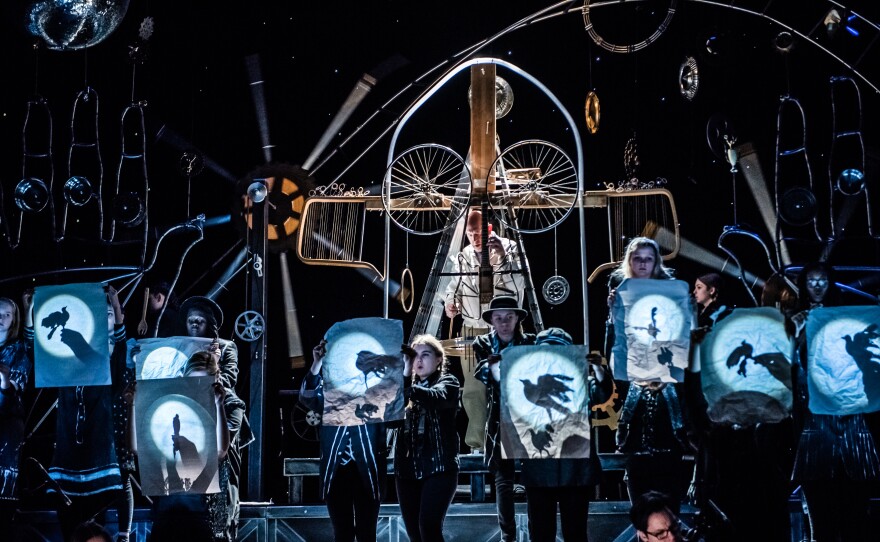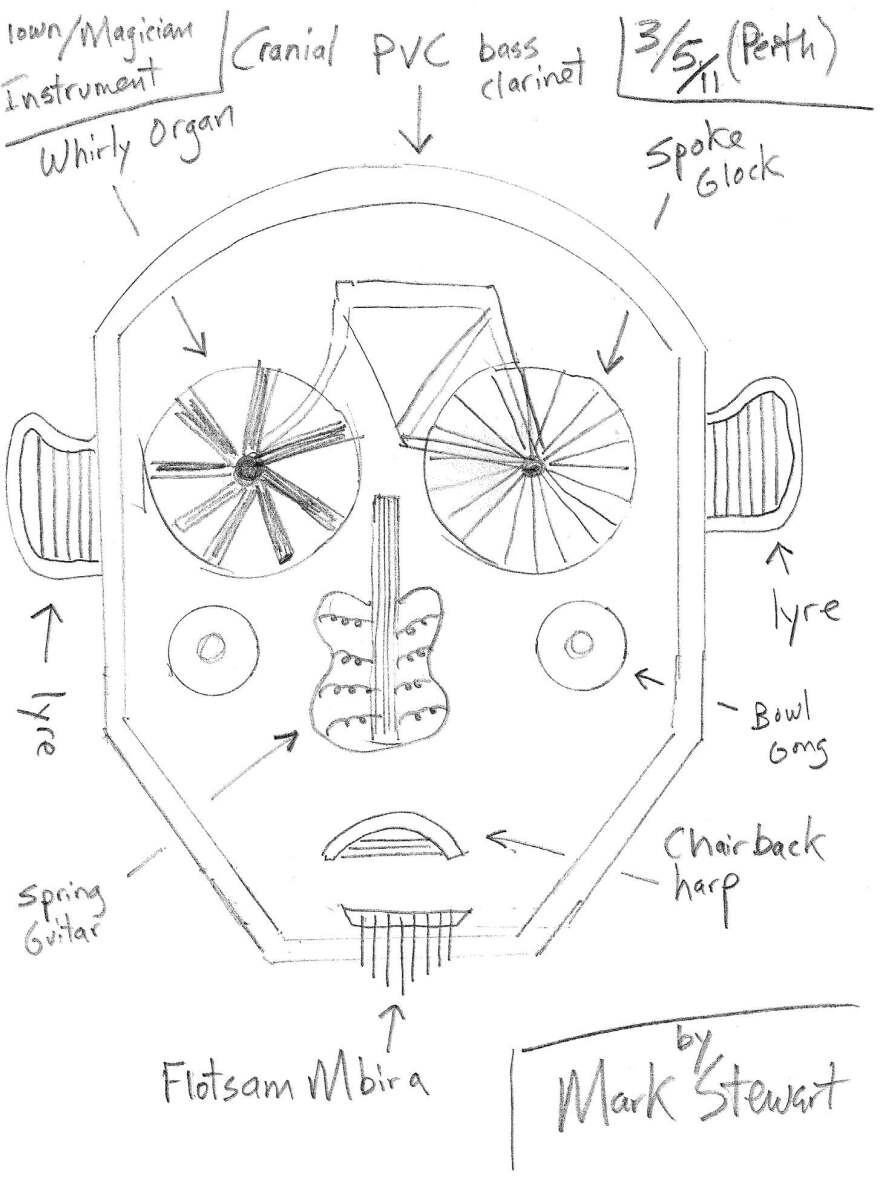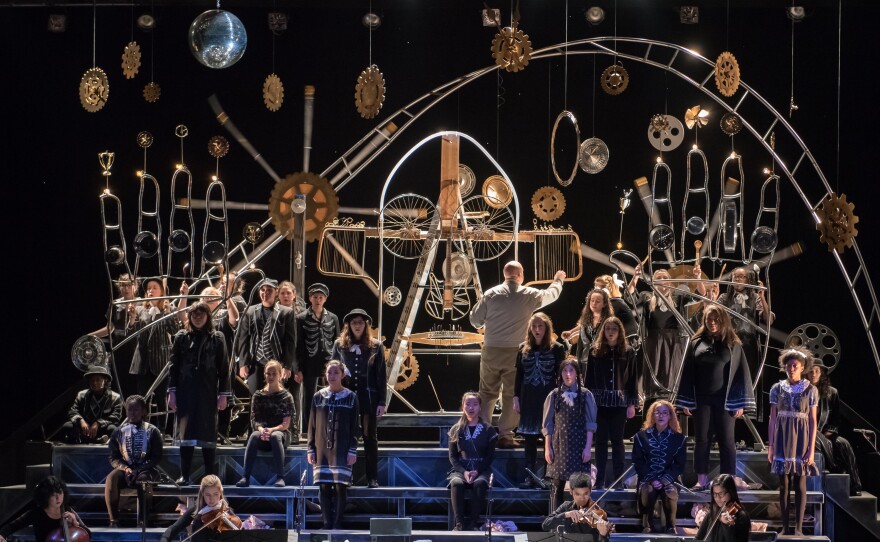San Diego Opera had "Aging Magician" on its schedule in March of 2020, but had to cancel the production because of COVID-19. Now it presents the West Coast premiere of this hybrid opera-theatre piece that combines singing, choral work, puppetry, and performance art.
"Aging Magician" tells the story of a clockmaker named Harold (Rinde Eckert) who’s approaching the end of his life and decides to distracts himself by writing a story.
"He's not quite sure what it is, but he's writing a story about a magician passing on his secrets to the next generation," explained director Julian Crouch.

It serves up an innovative new hybrid opera that is perfect for San Diego Opera's dētour Series, which strives to showcase new works and a variety of venues to expand the definition of what opera is and can be.
"I think the dētour series is a wonderful place for it to live and to have a new life," said creative director Beth Morrison. "Beth Morrison Projects was sort of founded to take opera in another direction. And so what that has meant is that I bring sort of singular artists together to create work that really defies boundaries and stretches the meaning of what opera can be."
"It's part opera, part theater, part concert, part spectacle," Crouch added. "To me, it feels very much like its own thing. It's hard to put it in a particular genre. It's nice to work on something so fresh."
Paola Prestini composed the inventive score for "Aging Magician," which employs the Attacca Quartet as not just musicians but also as an energetic presence on stage. Another presence onstage is the Brooklyn Youth Chorus.
"The beautiful thing about Harold, this character that Rinde [Eckert] wrote, is that Harold has a massive imagination," Prestini said. "And so in this imagination are all these voices. And so really what you get is this kind of fertile bringing to life of a very beautiful imagination of this character, Harold."
The Brooklyn Youth Chorus provides those voices Harold hears in his head.
"He sort of got a chorus that is a little bit like his inner voice or a little bit like spirit guides," Crouch said. "And sometimes they're a little hard on him and sometimes they're sweet and supportive."
"They poke at him, they pester him, they scold him, they cajole him. They laugh at with him. They are his imagination," Morrison added.
Designing a stage version of Harold’s imagination began with a drawing ten years ago.

"I had asked Mark Stewart to create a face that replicated Rinde's that he could enter at the very end, almost like entering his own imagination and play and make music out of," Morrison said.
Instrument designer Mark Stewart turned it into a giant Rube Goldberg musical device inspired by Coney Island.
"Stewart is an inventor of musical instruments," Crouch said. "And these musical instruments are often very sculptural. So we kind of make a musical interpretation of Coney Island, which is also a giant musical instrument that the entire chorus play."
Another design element in the play is paper.
"Harold is writing a book, so paper is there and it's inherent," Morrison said. "But then the choir is also using paper all the time and they'll the pull paper up and there'll be projections on the paper instead of having, like, a projection screen."
"I think the projection works particularly well on this" Crouch added. "It's a man who's writing on paper, so there's a lot of paper on the set, and so the projection is very much kind of living within the piece."

And the chorus literally breathes life into the paper with some simple but beautiful puppetry.
"They bring elements of joy and interest and wonder," added Morrison.
And that’s exactly what audiences may need after struggling through two years of a pandemic.
"It's a very tender show in the sense that it approaches questions of time and legacy and also death through the eyes of children, and that, I think, lends it a very different approach," Prestini said. "I think that it's hard to process what we've all been through, I think as a large society. So I feel like people are going to process this in a really visceral way. I think right now we're still really contemplating death and loss and confusion in our lives in a really visceral way."
But "Aging Magician" uses the transformative power of art to help us process complex feelings and emotions during challenging times.
"It's a little bit like soup for the soul," Morrison said. "It feels like a balm that we all need… This is a piece about humanity. It's a piece about legacy. It's a piece that brings joy."

San Diego audiences will have only three opportunities to experience this joy as San Diego Opera' presents "Aging Magician" this Friday night and then a Saturday matinee and evening performance at the Balboa Theatre.












